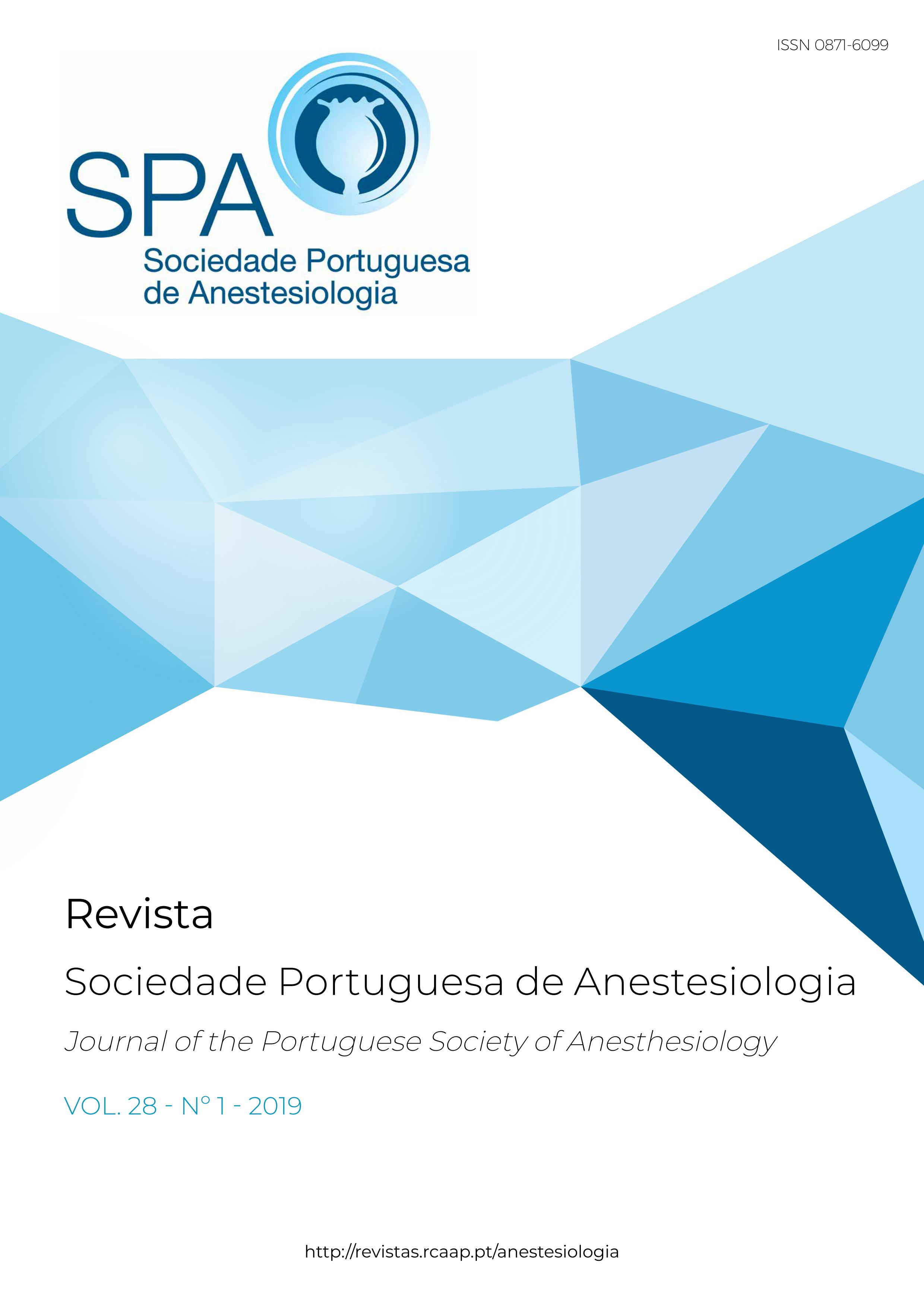Hipercápnia Intraoperatória em Cirurgia Transanal Minimamente Invasiva:
Um Relato de Caso
DOI:
https://doi.org/10.25751/rspa.15971Palavras-chave:
Complicações Intraoperatórias; Enfisema/etiologia; Hipercápnia/etiologia; Procedimentos Cirúrgicos Minimamente InvasivosResumo
A cirurgia transanal minimamente invasiva (TAMIS) foi descrita pela primeira vez em 2015 e permite a resseção de lesões rectais malignas em estadios precoces ou lesões mais avançadas quando a condição clínica do doente não permite cirurgia mais agressiva.
Reportamos um caso de hipercápnia durante TAMIS presumivelmente relacionada com fuga de gás da cavidade rectal e absorção arterial.
Apesar de a doente ter sido tratada conservadoramente e não apresentar consequências do evento descrito, este caso enaltece a necessidade de atenção à fuga de gás como uma complicação relacionada com esta técnica e de monitorização apertada uma vez que esta pode levar a insuficiência respiratória imediata ou tardia.
Downloads
Referências
2. Quaresima S, Balla A, Franceschilli L, La Torre M, Iafrate C, Shalaby M,et al. Transanal minimally invasive surgery for rectal lesions. JSLS. 2016; 20:e2016.00032. doi: 10.4293/JSLS.2016.00032.
3. Maglio R, Muzi GM, Massimo MM, Masoni L. Transanal minimally invasive surgery (TAMIS): new treatment for early rectal cancer and large rectal polyps—experience of an Italian center. Am Surg. 2015;81:273-7.
4. deBeche-Adams T, Hassan I, Haggerty S, Stefanidis D. Transanal minimally invasive surgery (TAMIS): a clinical spotlight review. Surg Endosc. 2017;31):3791- 800. doi: 10.1007/s00464-017-5636-4.
5. Buess G, Hutterer F, Theiss J, Böbel M, Isselhard W, Pichlmaier H. Das system fur die transanale endoskopische rectumoperation. Chirurg. 1984;55:677-80.
6. Martin-Perez B, Andrade-Ribeiro GD, Hunter L, Atallah S. A systematic review of transanal minimally invasive surgery (TAMIS) from 2010 to 2013. Tech Coloproctol. 2014 ;18:775-88. doi: 10.1007/s10151-014-1148-6.
7. Atallah S, Albert M, Larach S. Transanal minimally invasive surgery: a giant leap forward. Surg Endosc. 2010;24:2200-5. doi: 10.1007/s00464-010-0927-z.
8. Lim SB, Seo SI, Lee JL, Kwak JY, Jang TY, Kim CW, et al. Feasibility of transanal minimally invasive surgery for mid-rectal lesions. Surg Endosc. 2012;26:3127-32. doi: 10.1007/s00464-012-2303-7.
9. Alves Filho EF, Costa PFO, Guerra JC. Transanal minimally invasive surgery with single-port (TAMIS) for the management of rectal neoplasms: a pilot study. J Coloproctol. 2012;32:402-6.
10. Widmar M, Garcia-Aguilar J. Complications After TEM (Transanal Endoscopic Microsurgery) and TAMIS (Transanal Minimally Invasive Surgery). In: Pawlik T, Maithel S, Merchant N, editors. Gastrointestinal Surgery. New York: Springer; 2015.
11. Noura S, Ohue M, Miyoshi N, Yasui M. Transanal minimally invasive surgery (TAMIS) with a GelPOINT® Path for lower rectal cancer as an alternative to transanal endoscopic microsurgery (TEM). Mol Clin Oncol. 2016; 5: 148–52. doi: 10.3892/mco.2016.893.
12. Kerr K, Mills GH. Intra-operative and post-operative hypercapnia leading to delayed respiratory failure associated with transanal endoscopic microsurgery under general anaesthesia. Br J Anaesth. 2001;86:586-9.
13. Simkens GA, Nienhuijs SW, Luyer MD, de Hingh IH. Massive surgical emphysema following transanal endoscopic microsurgery. World J Gastrointest Surg. 2014; 6: 160–3. doi: 10.4240/wjgs.v6.i8.160.
14. Chandra A, Clarke R, Shawkat H. Intraoperative hypercarbia and massive surgical emphysema secondary to transanal endoscopic microsurgery (TEMS). BMJ Case Rep. 2014; 2014: bcr2013202864. doi: 10.1136/bcr-2013-202864.
15. Sato K, Itoh S, Shigiyama F, Kitagawa T, Maetani I. Pneumoretroperitoneum, pneumomediastinum and subcutaneous emphysema after colorectal endoscopic submucosal dissection (ESD) with air insufflation. J Interv
Gastroenterol. 2011;1:136-8. doi: 10.4161/jig.1.3.18513
Downloads
Publicado
Como Citar
Edição
Secção
Licença
Os artigos estão livremente disponíveis para serem lidos, descarregados e partilhados a partir do momento da sua publicação.
A RSPA reserva-se o direito de comercialização do artigo enquanto parte integrante da revista (na elaboração de separatas, por exemplo). O autor deverá acompanhar a carta de submissão com a declaração de cedência de direitos de autor para fins comerciais.
Relativamente à utilização por terceiros a Revista da SPA rege-se pelos termos da licença Creative Commons “Atribuição – uso Não-Comercial (CC BY-NC).
Após publicação na RSPA, os autores ficam autorizados a disponibilizar os seus artigos em repositórios das suas instituições de origem, desde que mencionem sempre onde foram publicados.


